The House of Gongo
The House of Gongo Ranger Africa Safaris
Approaching the magnificent Bwindi Impenetrable Forest from Kabale, one ascends winding rural roads bordered by scenic landscapes. Turning onto a rugged dirt track marked by a humble wooden sign, you arrive at a lush garden.
Nestled high on the slopes of the Albertine Rift, Broadbill Forest Camp is a serene haven of natural beauty. This vibrant retreat, alive with the colors of sunbirds, blooming flowers, and the gentle hum of bees, offers a peaceful sanctuary amidst the surrounding over-cultivated lands.
Here lies a sanctuary for weary naturalists seeking peace and immersion in nature’s tranquility. It draws visitors not only from nearby regions but also from across the globe.
Broadbill Forest Camp is a retreat from the chaos of modern life, offering serenity amidst a world driven by corporate demands and subsistence struggles.
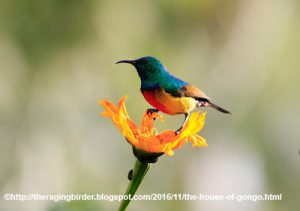
Regal Sunbird
We were warmly greeted by a charming young lady at the reception, who asked us to wait for Emmy. It felt intentional, allowing us to relax and absorb the serene camp environment. At the perfect time, a man in coveralls appeared, extending a firm handshake that hinted at a history of manual labor.
His smile wasn’t exaggerated but perfectly warm, with gleaming eyes hinting at deep wisdom and knowledge. Emmy led us on a stroll around the camp, chatting about our journey, the camp’s history, and the local community.
Our conversation soon turned to Bwindi Impenetrable National Park, a subject Emmy seemed deeply passionate about. Emmy’s extensive connections with local residents and park personnel became evident, and his knowledge of the flora and fauna was astounding.
Years ago, while wandering these hills, Emmy envisioned starting a camp. A particular hillside, alive with Dusky Twinspots and African Green Broadbills, inspired him to make his dream a reality.
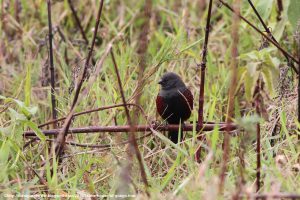
Dusky Twinspot
Emmy made a heartbreaking discovery in the forest: the bones of two duikers, a small and rare forest antelope. These creatures had become scarce because locals trapped them for bushmeat, threatening their survival.
Determined to help, Emmy devised a straightforward solution. He provided the community with alternative food sources, starting with pigs. He funded this initiative using revenue from the camp, creating a sustainable impact.
The results were remarkable. Wildlife, including duikers, became more visible, boosting the area’s appeal as an eco-tourism destination. This transformation underscored the power of conservation through community support.
We spent three unforgettable days at Broadbill Forest Camp, longer than our typical two-day stays. Initially, I worried about staying at a “mid-range” lodge, but Emmy’s hospitality quickly erased my doubts.
Imagine a canvas tent on a wooden platform, overlooking untouched rainforest, complete with a rustic porch and comfortable chairs. Add a luxurious bathroom with a hot bath, artistic stone decor, and hot water bottles under the covers. Broadbill Forest Camp was both charming and comfortable.
The only thing missing during our nights was the enchanting call of Rwenzori Nightjars, due to the absence of moonlight. For any birding enthusiast visiting Uganda, skipping Broadbill Forest Camp would truly be a missed opportunity.
Otherwise, perfect.
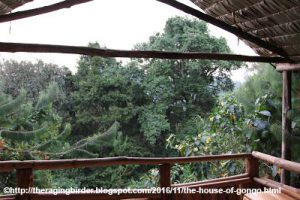
View from our “tent”
Now, the birding. Our first morning began with an exciting hike to Mabwindi Swamp, a crucial breeding site for the Grauer’s Rush Warbler. Along the way, we focused on spotting the African Green Broadbill at its nesting area midway to the swamp.
The odds, however, were against us. The nesting season had ended, so the broadbills were neither vocal nor easily traceable. To complicate matters, strong winds made detecting their soft, wispy whistles nearly impossible, even for trained ears.
Emmy, ever resourceful, brought along a young protégé to assist in our challenging birding quest. Despite their combined expertise, the process was frustrating and slow, reminiscent of birding in Semliki but thankfully without the heat.
We persevered, working diligently for every species. Eventually, a mixed-species flock emerged, rekindling our hopes. Deciding to split up, we pushed on, though doubts grew as the day progressed. Just as we considered heading to the swamp, we heard a distant call from the young guide.
We scrambled back up a steep slope, retracing our steps with urgency. I ran ahead, spotting the bird immediately and holding my binoculars steady despite the excitement. Moments later, Martha joined me, and together we marveled at a pair of African Green Broadbills feeding in the lower canopy.
This was undoubtedly a highlight of the trip. The bird’s vibrant beauty and its exclusivity to Bwindi made the sighting even more special. What a magnificent moment to treasure
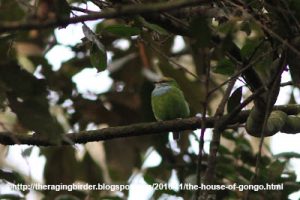
African Green Broadbill with that spanking blue bib
Continuing to the swamp, we snagged more specialties like Yellow-eyed Slaty Flycatcher, an Albertine Rift endemic.
Yellow-eyed Slaty Flycatcher
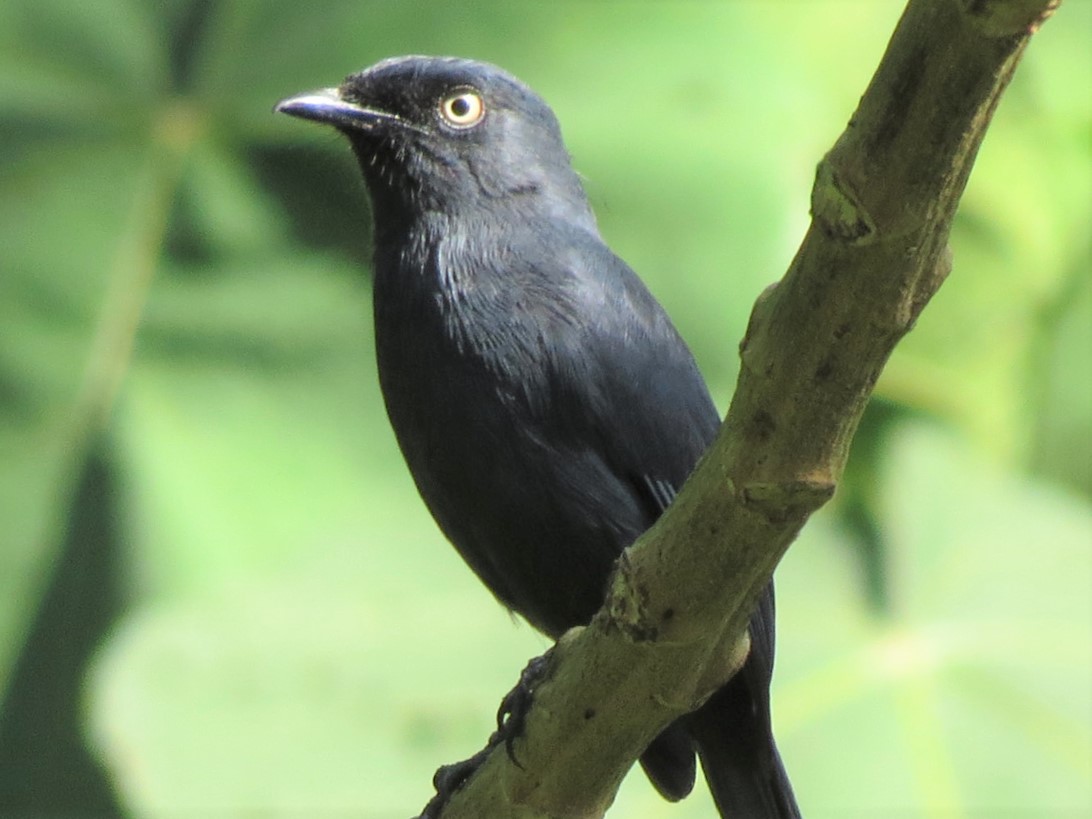 Then to the swamp, where the warbler proved difficult to detect. We tried the recording but could not elicit a response. But the swamp was big, so we worked the edge until we could hear one. This is the shiest of a genus of uber-shy warblers that all live in dank vegetation. I’d been really lucky to see the Evergreen Forest Warbler, its close relative, earlier in the trip and I was really keen on adding another. Luckily, it did a flight display, fluttering up from the reeds and promptly back down, but alighting on a reed for part of a second, just long enough for a view! Stunningly, 3 more joined in on a calling frenzy, and we were able to see two displaying right in the open! Hence the shot below:
Then to the swamp, where the warbler proved difficult to detect. We tried the recording but could not elicit a response. But the swamp was big, so we worked the edge until we could hear one. This is the shiest of a genus of uber-shy warblers that all live in dank vegetation. I’d been really lucky to see the Evergreen Forest Warbler, its close relative, earlier in the trip and I was really keen on adding another. Luckily, it did a flight display, fluttering up from the reeds and promptly back down, but alighting on a reed for part of a second, just long enough for a view! Stunningly, 3 more joined in on a calling frenzy, and we were able to see two displaying right in the open! Hence the shot below:
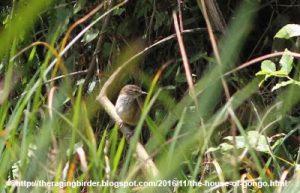
Grauer’s Rush Warbler
By this point, fatigue had set in, and we were ready to leave. However, our departure was halted by a Red-chested Flufftail’s distinctive call from the marsh.
Until that moment, I had doubted the existence of flufftails. They seemed mythical, the kind of birds you read about but never encounter. Yet here we were, poised to witness one, thanks to Emmy Gongo.
Emmy’s expression revealed a mix of reluctance and determination, signaling we’d stay another half hour. We stood motionless, our eyes fixed on a crushed reedbed—a likely crossing point for this elusive rail.
Emmy mimicked the call skillfully, spacing intervals just right. The flufftail responded, and so did three more, likely a mix of males and females.
After a tense half-hour, one bird edged closer, just on the verge of emerging. I faced a split-second decision—camera or binoculars. Choosing the latter, I caught a female flufftail darting across for a fleeting second. The moment was too brief for a photo, but I had no regrets.
Later, the birding eased into a quieter rhythm, punctuated by surprises. A Great Lakes Bush Viper slithered across the trail, nearly stepped on by Emmy.
It was an unforgettable morning, filled with rare sightings and thrilling encounters, the kind that stay etched in memory forever.

Great Lakes Bush Viper
For the second day, we’d decided we’d hammered enough of the high-elevation stuff to warrant a trip down to the neck. We’d only missed Grauer’s Warbler and Lagden’s Bush-shrike, but at the neck, several lifers awaited. Plus, if could be birded from the road (without paying the enormous park fees).
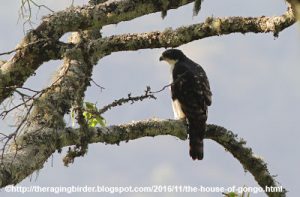
Cassin’s Hawk-Eagle
Our precious morning hours were hampered by some construction along the way. However, I was impressed that they could install a culvert in about 40 minutes, and we were soon able crush the residual dirt mound in Emmy’s Land Cruiser. Along the way, we enjoyed views of several monkey species.
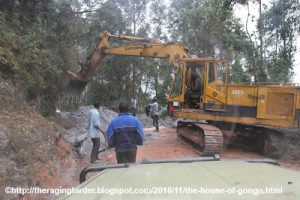
Our birding was interrupted
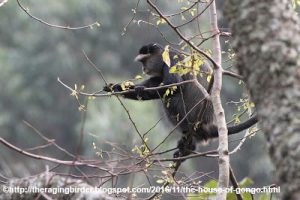 Silver Monkey
Silver Monkey
 Colobus Monkey
Colobus Monkey
Arriving at the neck, I was thrilled to be able to spot a bird before Emmy. It was a Black Bee-eater hunting from a snag in trademark fashion. Other than that, the neck proved anticlimactic, our expectations having been boosted to unrealistic heights by the day before. So, we returned with no Woodhouse’s Antpecker or Many-coloured Bush-shrike in hand, but definitely with some great laughs and great memories and a couple of excuses to come back.
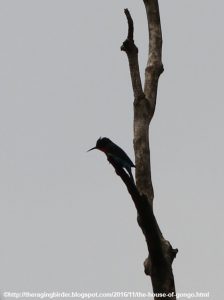
Black Bee-eater
Thank you to Emmy and all others who made our visit to Bwindi so special.We left feeling truly inspired by a great naturalist and community leader and cannot wait till our next birding adventure (eastern TZ, perhaps??).
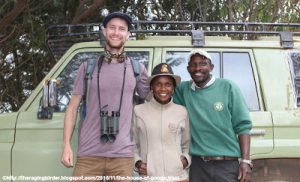
The crew: Mfalme, Martha, Emmy
Oh, and I cannot forget the Handsome Francolins (rift endemic) which we snagged from the taxi on our way back down! MORALE WAS THROUGH THE ROOF!!
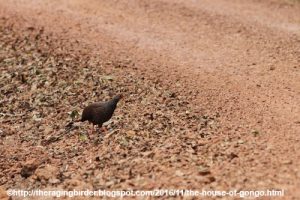
Handsome Francolin



 We begin with an early breakfast to set off for the chimpanzee trek. Early morning is ideal to find the chimps still in their nests. We’ll ensure packed lunches are ordered, as we plan to spend more time in the forest.
We begin with an early breakfast to set off for the chimpanzee trek. Early morning is ideal to find the chimps still in their nests. We’ll ensure packed lunches are ordered, as we plan to spend more time in the forest.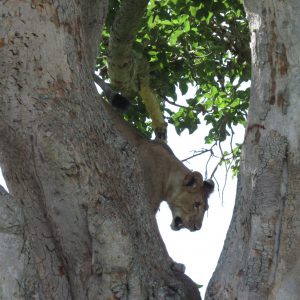
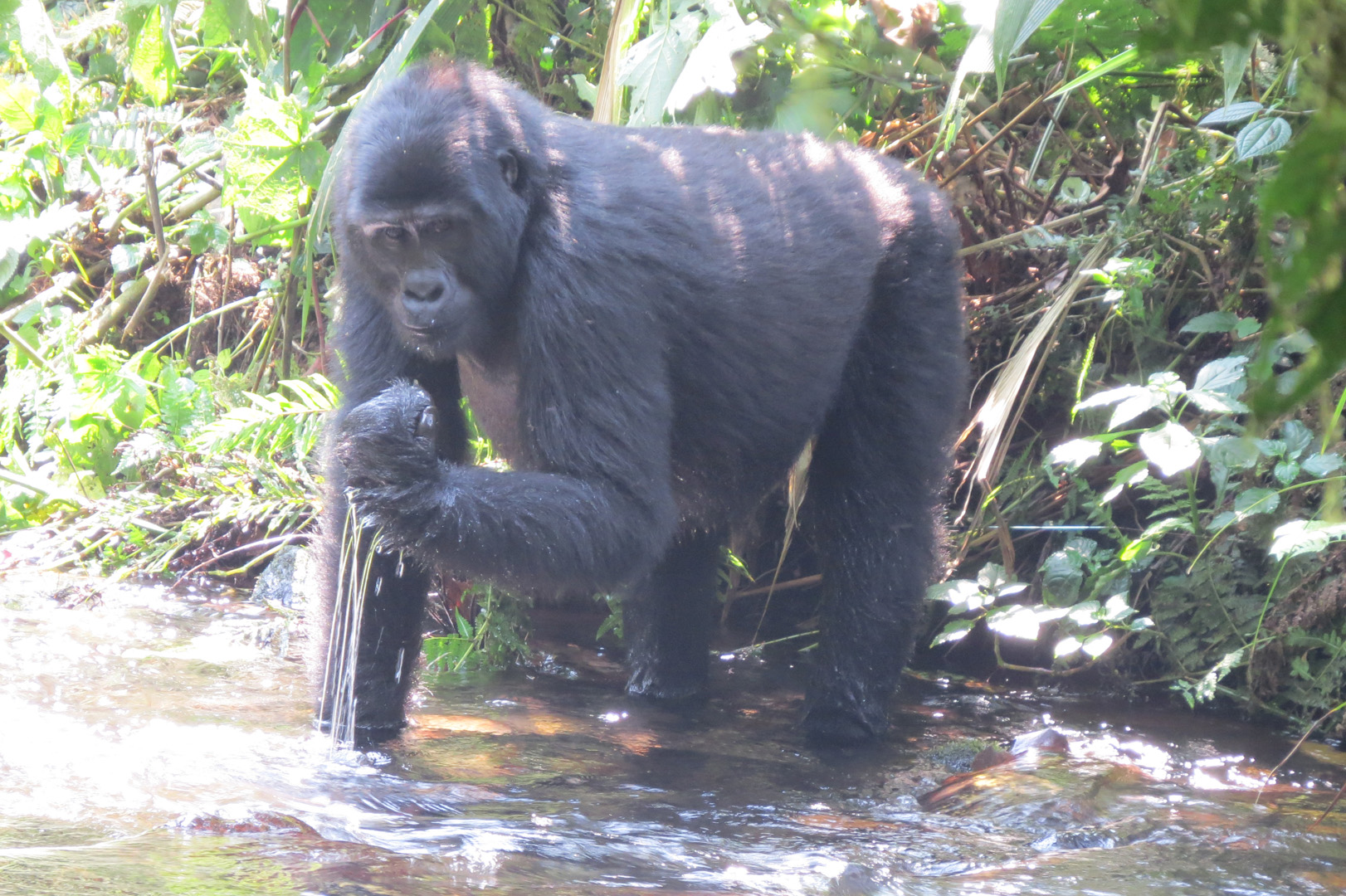 Today is dedicated to gorilla tracking, an unforgettable experience in the dense Bwindi Impenetrable Forest. Meeting the gentle giants is the highlight of a lifetime. After the trek, we transfer and overnight at Buhoma Haven Lodge, closer to Kihihi Airport for convenience.
Today is dedicated to gorilla tracking, an unforgettable experience in the dense Bwindi Impenetrable Forest. Meeting the gentle giants is the highlight of a lifetime. After the trek, we transfer and overnight at Buhoma Haven Lodge, closer to Kihihi Airport for convenience.